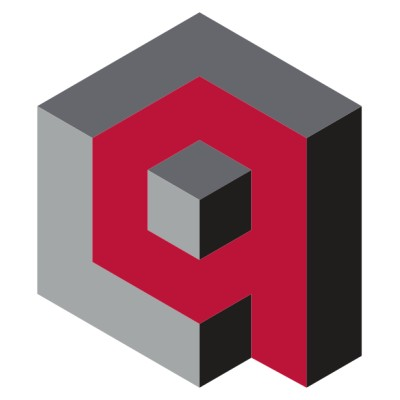Qdrant's New Cloud Features: A Game Changer for Enterprise AI Deployments
March 5, 2025, 11:43 pm

Location: United States, New York
Employees: 501-1000
Founded date: 2014
Total raised: $804M

Location: United States, California, San Francisco
Employees: 5001-10000
Founded date: 2009
In the fast-paced world of artificial intelligence, speed and security are paramount. As businesses rush to adopt AI technologies, they face a maze of challenges. Enter Qdrant, a high-performance open-source vector database that is stepping up to the plate. With its latest cloud features, Qdrant is not just keeping pace; it’s setting the standard for enterprise AI deployments.
The digital landscape is evolving. Companies are increasingly reliant on AI to drive innovation and efficiency. However, scaling these applications can feel like trying to build a skyscraper on quicksand. Qdrant aims to solidify that foundation. Its new enterprise capabilities in Qdrant Cloud are designed to tackle operational bottlenecks head-on. This isn’t just about speed; it’s about security, observability, and automation.
Imagine navigating a ship through a storm. You need a sturdy vessel and a reliable compass. Qdrant Cloud offers just that. The latest updates include single sign-on (SSO), cloud role-based access control (RBAC), and advanced monitoring tools. These features empower organizations to deploy, monitor, and control their AI workloads with ease.
Qdrant’s vector database technology is designed for high performance. It can handle billions of vectors, making it a go-to solution for enterprises. But as businesses scale, they need more than just speed. They require robust security and seamless management. Qdrant’s new features address these needs head-on.
The introduction of granular database API keys adds another layer of control. Organizations can specify read-only or read/write permissions for each key. This flexibility is crucial for enterprises that need to balance accessibility with security. It’s like having a master key that only opens certain doors.
Compatibility with popular monitoring tools like Datadog and Grafana means that organizations can easily integrate these capabilities into their existing workflows. This real-time insight is invaluable for maintaining peak performance and quickly addressing any issues that arise.
Infrastructure-as-code tools like Terraform enable version-controlled deployments. This means that organizations can recreate their environments with ease, saving time and reducing the risk of errors. In a world where agility is key, this capability is a game changer.
The ability to manage vector search infrastructure efficiently is crucial. Qdrant Hybrid Cloud offers unparalleled control over data and workloads, ensuring that organizations can operate with confidence. The platform-independent GPU-accelerated vector indexing capability further enhances performance, delivering up to 10x faster index-building.
In a landscape where AI is becoming the norm, Qdrant stands out as a beacon of innovation. Its commitment to providing robust, scalable solutions is evident in its latest cloud features. By addressing the complexities of AI deployments, Qdrant is not just keeping up with the competition; it’s leading the charge.
The digital landscape is evolving. Companies are increasingly reliant on AI to drive innovation and efficiency. However, scaling these applications can feel like trying to build a skyscraper on quicksand. Qdrant aims to solidify that foundation. Its new enterprise capabilities in Qdrant Cloud are designed to tackle operational bottlenecks head-on. This isn’t just about speed; it’s about security, observability, and automation.
Imagine navigating a ship through a storm. You need a sturdy vessel and a reliable compass. Qdrant Cloud offers just that. The latest updates include single sign-on (SSO), cloud role-based access control (RBAC), and advanced monitoring tools. These features empower organizations to deploy, monitor, and control their AI workloads with ease.
The Heart of AI: Vector Databases
At the core of AI applications lies the vector database. It’s where data transforms into knowledge. Vectors allow AI to understand relationships between concepts, enabling semantic search, recommendation systems, and image recognition. This is the backbone of modern AI. Without it, AI would be like a ship without a sail—adrift and directionless.Qdrant’s vector database technology is designed for high performance. It can handle billions of vectors, making it a go-to solution for enterprises. But as businesses scale, they need more than just speed. They require robust security and seamless management. Qdrant’s new features address these needs head-on.
Enterprise-Grade Security and Management
Security is not just a checkbox; it’s a necessity. Qdrant’s cloud RBAC allows for fine-grained permissions. This means organizations can manage access at a granular level, ensuring that sensitive data remains protected. With single sign-on capabilities, users can log in through various providers like Okta and Google Workspace. This simplifies access while enhancing security.The introduction of granular database API keys adds another layer of control. Organizations can specify read-only or read/write permissions for each key. This flexibility is crucial for enterprises that need to balance accessibility with security. It’s like having a master key that only opens certain doors.
Real-Time Monitoring: The Eyes in the Sky
In the world of AI, visibility is key. Qdrant’s integration with Prometheus/OpenMetrics provides real-time monitoring and observability. This allows teams to track query performance, latency, and resource usage. Imagine having a dashboard that gives you a bird’s-eye view of your operations. That’s what Qdrant offers.Compatibility with popular monitoring tools like Datadog and Grafana means that organizations can easily integrate these capabilities into their existing workflows. This real-time insight is invaluable for maintaining peak performance and quickly addressing any issues that arise.
Automation: The Engine of Efficiency
Time is money. Qdrant’s cloud API simplifies management by allowing users to programmatically manage clusters and deployments. This automation reduces overhead and streamlines operations. It’s like having a well-oiled machine that runs smoothly without constant supervision.Infrastructure-as-code tools like Terraform enable version-controlled deployments. This means that organizations can recreate their environments with ease, saving time and reducing the risk of errors. In a world where agility is key, this capability is a game changer.
The Future of AI with Qdrant
As enterprises continue to scale their AI applications, the demand for high-performance, secure, and manageable solutions will only grow. Qdrant is poised to meet this demand. Its recent enhancements are not just incremental improvements; they represent a significant leap forward in enterprise-grade functionality.The ability to manage vector search infrastructure efficiently is crucial. Qdrant Hybrid Cloud offers unparalleled control over data and workloads, ensuring that organizations can operate with confidence. The platform-independent GPU-accelerated vector indexing capability further enhances performance, delivering up to 10x faster index-building.
In a landscape where AI is becoming the norm, Qdrant stands out as a beacon of innovation. Its commitment to providing robust, scalable solutions is evident in its latest cloud features. By addressing the complexities of AI deployments, Qdrant is not just keeping up with the competition; it’s leading the charge.
